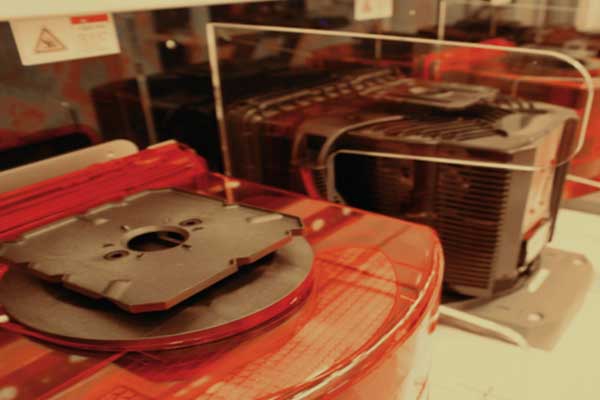Samsung Electronics, a world leader in advanced semiconductor technology, said it expected foundries to play an increasingly important role as total solution providers, pushing the limits for broader engagement in the 4th industrial revolution era.
During a keynote speech at the 2018 Institute of Electrical and Electronics Engineers International Electron Devices Meeting (IEDM), Dr ES Jung, president and head of Foundry Business at Samsung Electronics, shared his vision that the next industrial revolution can only happen by the continuous evolution of semiconductor technology.
In his presentation “Fourth Industrial Revolution and Foundry: Challenges and Opportunities”, Dr Jung explained that the evolution of advanced foundry technologies will be crucial to enable the design and manufacture of innovative semiconductor products that will take our everyday life into new and previously unthought-of directions.
New and exciting applications such as AI, cloud computing, autonomous vehicles, and smart home require high-level technologies including sophisticated design and system level optimisation.
Dr Jung discussed the increased complexities of semiconductor technology that has altered the role of the semiconductor foundry from a conventional wafer manufacturing business to a total solution provider.
Today, foundries are providing value-added services, especially in the areas of design service and infrastructure, product engineering, and packaging/testing.
Semiconductors have evolved to be faster in speed, higher in density, and lower in power consumption, allowing a wide range of new and innovative applications. In addition, to analyse exponentially growing, unprecedented amounts of data, new memory architectures and completely new schemes of computation, such as neuromorphic computing, have to be developed.
Dr Jung said: “None of these technological advancements would have been possible without collaboration across the entire semiconductor industry.”
“This collaboration is paramount between material, equipment, electronic devices, government, universities, research centres, and consortiums, to ensure the success in the upcoming 4th industrial revolution,” he added.
Dr Jung also introduced some of recent research and development in future silicon technology, including MRAM, a non-volatile memory solution embedded in conventional logic process, and 3nm gate-all-around (GAA) technology.
MRAM is one of the examples of new semiconductor devices that consume much less power. As memory density becomes higher, MRAM's power efficiency becomes more prominent, consuming only 0.5 per cent of power compared to SRAM at 1,024Mb. MRAM also has smaller cell area, which allows design flexibility.
Samsung's unique GAA technology called multi-bridge-channel FET(MBCFET) uses vertically stacked multiple nanosheet channels.
With variable width of nanosheet, this technology provides not only optimal performance and power characteristics, but also high design flexibility. Furthermore, MBCFET is fabricated using 90 per cent or more of FinFET process with only a few revised masks, allowing easy migration.
Also with one of its newly published papers at 2018 IEDM, Samsung Electronics shared the development progress of 3nm, a successful demonstration of fully functioning high-density SRAM circuit. The development of Samsung's first process node applying MBCFET technology is on schedule. – TradeArabia News Service
Industry, Logistics & Shipping
Samsung highlights role of foundries in 4th industrial revolution

- Similar Stories

ESA picked 2024 Steel Sustainability Champion by worldsteel

Bayanat, Yahsat shareholders to vote on merger on April 25

Al Ojaimi Industrial launches JV with REPL in Riyadh

UAE-Oman railway project will help cut carbon emissions

Saudi industrial zone sees big jump in local food companies

$3bn UAE-Oman rail project enters implementation phase

Hitachi plans $1.5bn investment to boost transformer production

Alba achieves milestone at PS5 with Mitsubishi's turbine First Fire

Krohne fuels industrial decarbonisation with top solutions

AD Ports locks 20-year deal to operate, upgrade Luanda Port

UAE, Oman enter $35bn investment deals

Al Yamamah starts production at expanded Jeddah pipes factory

Schneider appoints El Jarroudi VP for Industrial Automation

Dubai World Trade Centre cluster names new finance head

Bosch banking on innovations, tie-ups and acquisitions

Ariston Middle East highlights sustainable solutions in UAE

National Forum for SMEs - Government Procurement Tuesday

Aramco in talks to buy 10% stake in China's Hengli Petrochemical

KBR's phenol technology selected by Sabic Fujian Petrochemicals

NSK linear guides to reduce lead times for European users

Sanad, Khalifa University to boost local aviation talent pool

RCJY future-proofs IT infrastructure with Nutanix

UK and Saudi Arabia to host major trade expo in Riyadh

Armstrong marks 90th anniversary, commits to innovation

Over 400 leading global brands to take part in Saudi food show

Family businesses ‘prioritise expansion, technology’

2nd Industrialists Career Exhibition opens, 800 jobs up for grabs

Almarai posts solid growth in Q1; revenue soars to $1.43bn

Dewa launches new edition of technical infrastructure manual

Waja to set up new plant in Egypt for e-car production
